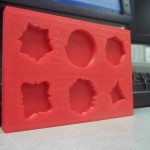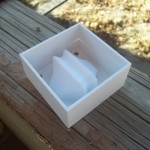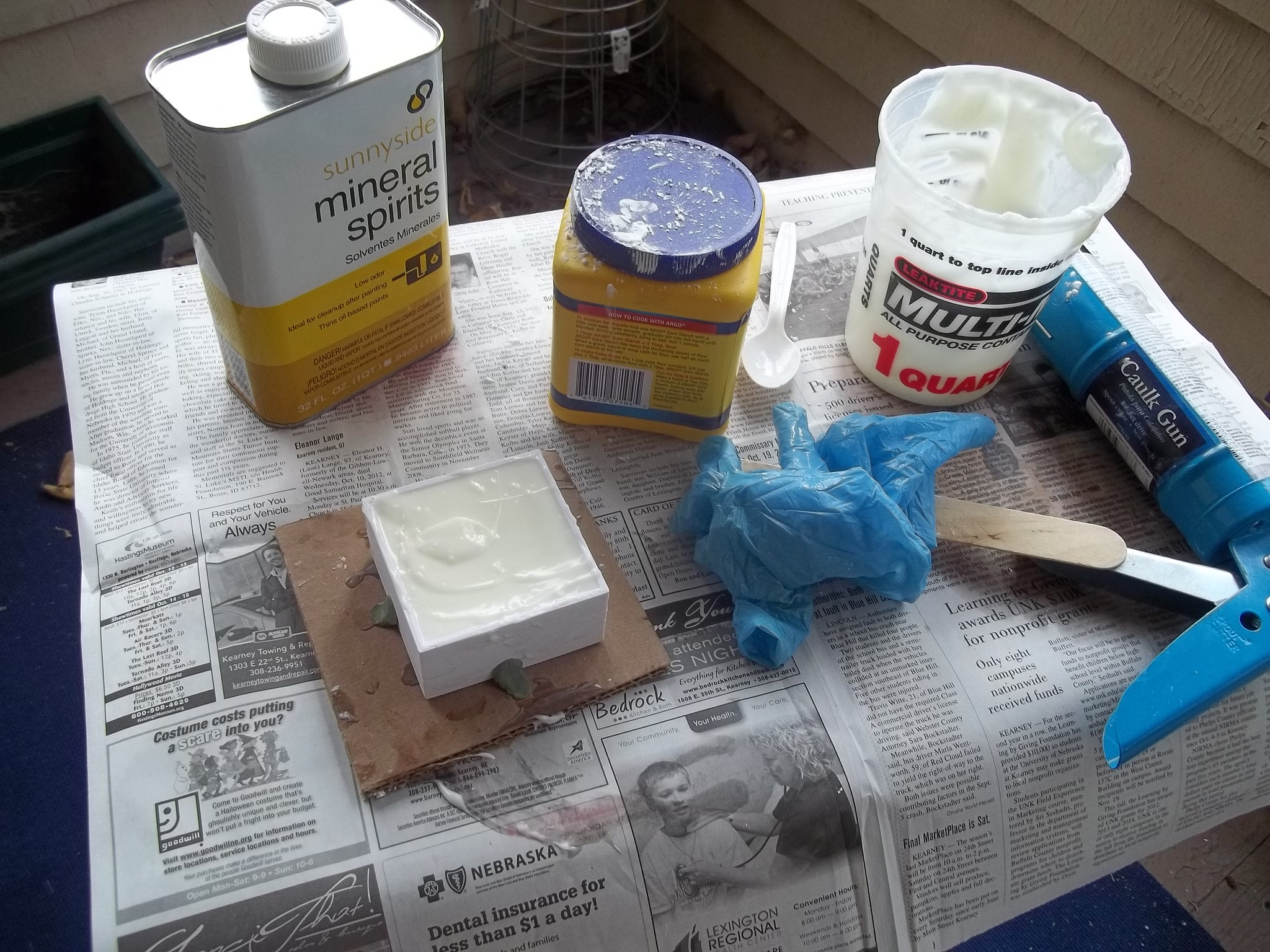Making 3D-printable open-face molds with OpenSCAD + casting experiments
This semester has been all about mold-making and casting for me, and finding new ways to use 3D-printing technology. I’ve already had good success with making two-part molds and a using a variety of casting media with them, and even tried my hand at the lost ABS process to turn one of the two-part molds into aluminum!
However, two-part molds are only one type of mold, and they aren’t always the most appropriate for the job. Some molds have more than two parts (called multi-part molds), while others have only one part (called open-face molds). Open-face molds are the simplest, and can be produced by just taking a model and pushing it into a material to create an indentation.
Source files on Thingiverse
All of the OpenSCAD scripts, along with sample input and output files, instructions and casting tips, are released for free on Thingiverse. Go get yourself a copy and start making some molds!
Download the source files on Thingiverse
Understanding and using the scripts
The way I see it, there are two ways to make an open-face mold for 3D-printing; subtracting a model from the surface of a plane to create an indentation, and adding the model to the plane to create a kind of inverted mold (a mold of a mold). I call these two types of molds negative and positive respectively.
 The negative mold generator is great anytime you want to directly cast copies of your model using another material. You can make castings using silicone, Oogoo, chocolate, gelatin and more and end up with copies of the model you want. I like combining multiple models into a single STL to create little ice cube trays of shapes!
The negative mold generator is great anytime you want to directly cast copies of your model using another material. You can make castings using silicone, Oogoo, chocolate, gelatin and more and end up with copies of the model you want. I like combining multiple models into a single STL to create little ice cube trays of shapes!
The positive mold generator is meant for actually producing other molds in other materials. In other words, whatever castings you make from this type of mold will actually be a negative mold of your model! Let’s say you wanted to make chocolate copies of a model.  If you used the negative mold generator, you’d have to find a way to get the chocolate castings out of the mold using either a release agent or brute force, both of which would compromise the castings, the mold or both. But if you printed a positive mold, you could cast a negative mold from it using a food-grade silicone. The food-grade silicone mold would be flexible, so you could easily bend the mold and push your chocolate castings away in-tact, with no release agent!
If you used the negative mold generator, you’d have to find a way to get the chocolate castings out of the mold using either a release agent or brute force, both of which would compromise the castings, the mold or both. But if you printed a positive mold, you could cast a negative mold from it using a food-grade silicone. The food-grade silicone mold would be flexible, so you could easily bend the mold and push your chocolate castings away in-tact, with no release agent!
Casting experiments
You can use all sorts of cool casting media with these molds, much more than I have personally tried myself. I have had success with Oogoo (DIY RTV silicone alternative) and chocolate, but I’d like to try plaster, casting resin, alginate and Instamorph, amongst others.
3D-printed ABS is highly textured and may be somewhat porous (it absorbs humidity slowly), so take the necessary precautions with your casting media to make sure you can retrieve the castings afterwards. I did not use any release agent for my Oogoo experiments, because it is very flexible and can be pulled from the mold easily. But chocolate, wax and plaster will lock into the mold, so be sure to use a release agent (I used spray butter with the chocolate, but Vaseline should help with wax and plaster).
Oogoo attempt #1
Oogoo is a really fun and cheap material, but it definitely needs a fair amount of experimentation to get the results you might want. I diluted my Oogoo mixture with mineral spirits until it was easy to pour, but this may have been a bad idea. After a few days, my Oogoo castings shrank quite a bit and became hard, and they still smell pretty bad. Still, its worth checking out!
[flickr-gallery mode=”photoset” photoset=”72157631788117642″]
Oogoo attempt #2
[flickr-gallery mode=”photoset” photoset=”72157631787897478″]
Chocolate attempt
Remember, if you want to try chocolate, use a release agent like spray butter. You can also opt to use the positive mold generator to print a positive mold, then cast a food-safe negative mold with silicone. Then you can pour chocolate and pop the casts right out without problems.
[flickr-gallery mode=”photoset” photoset=”72157631779269010″]
